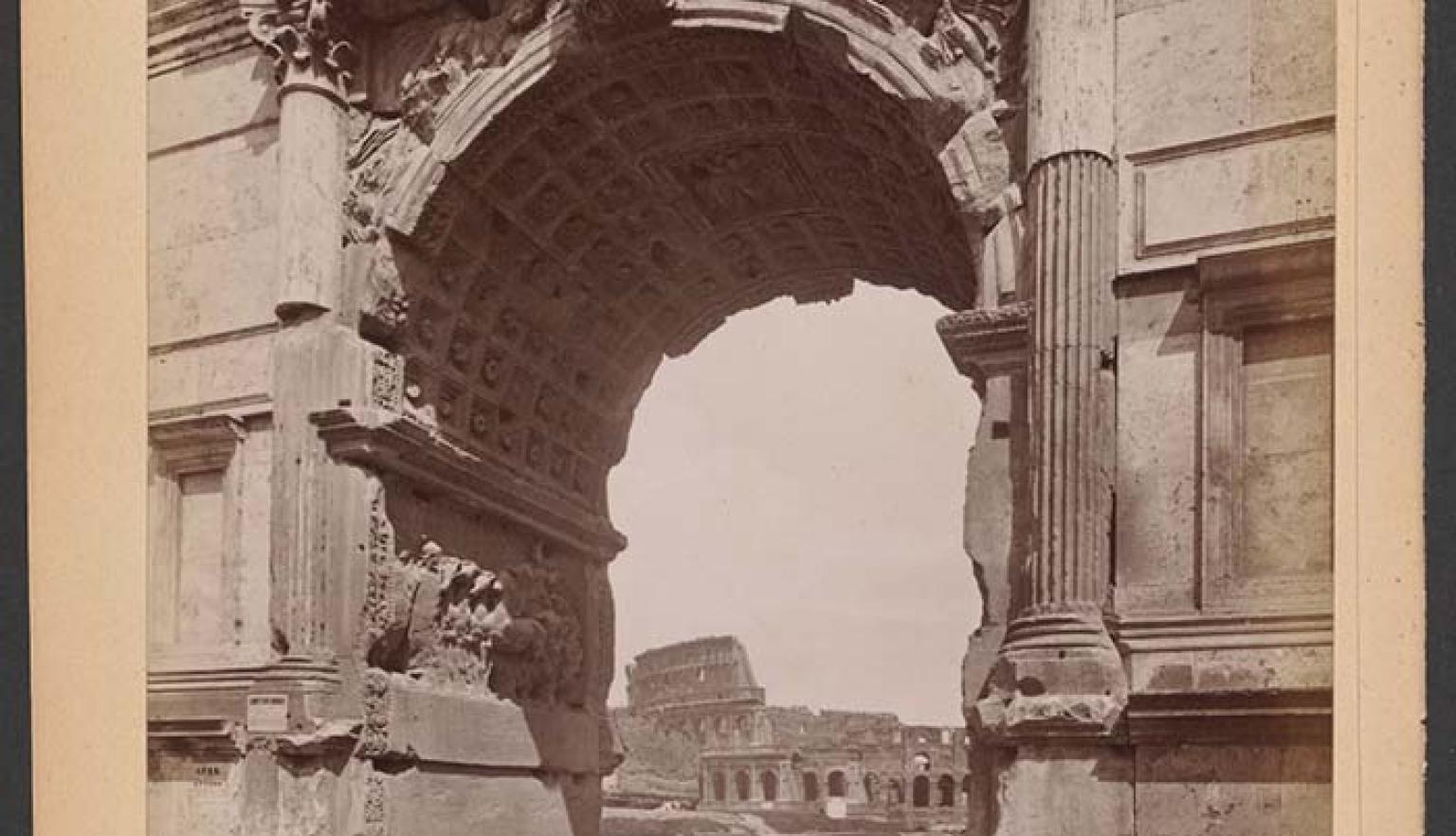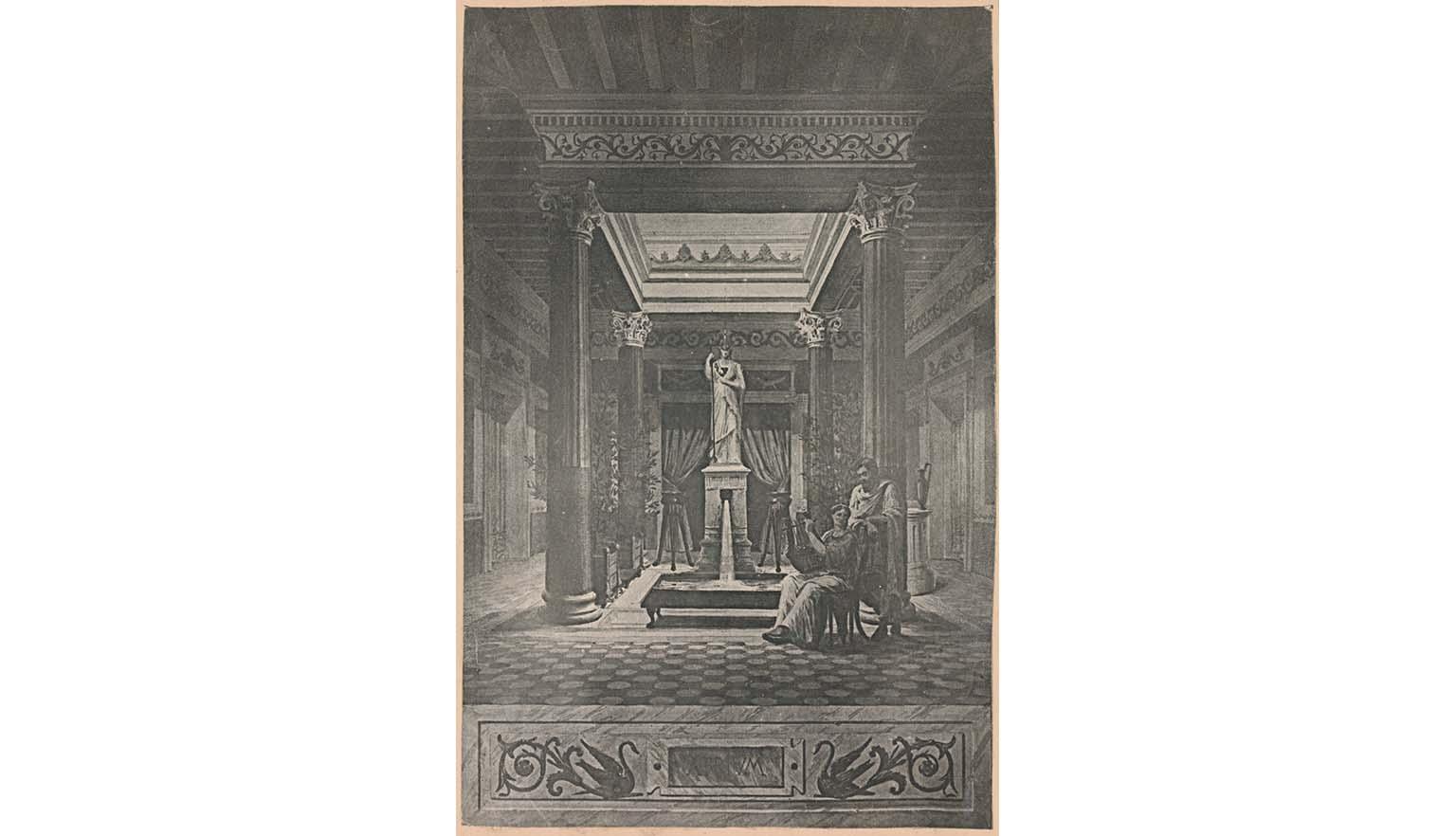Imperium Romanum - The Roman Empire
The Roman Empire
Rome’s story is said to have begun in 753 BCE with the founding of the city by the legendary twins Romulus and Remus. According to myth, they were raised by a wolf after being abandoned as infants.
This is just one of many stories about Rome’s origins, but it remains the most well-known. The true events of Rome’s founding are still unknown.
Despite its mysterious beginnings, Rome’s influence spread quickly beyond central Italy.
At its peak in 117 CE, the Roman Empire (Imperium Romanum) covered around 5 million square kilometres. It stretched from Hadrian’s Wall in northern England to the Red Sea coast of Egypt. For comparison, the modern European Union covers about 4.4 million square kilometres.
The period from 27 BCE to 180 CE is known as the Pax Romana (Roman Peace). It was a time of stability and prosperity across the empire.
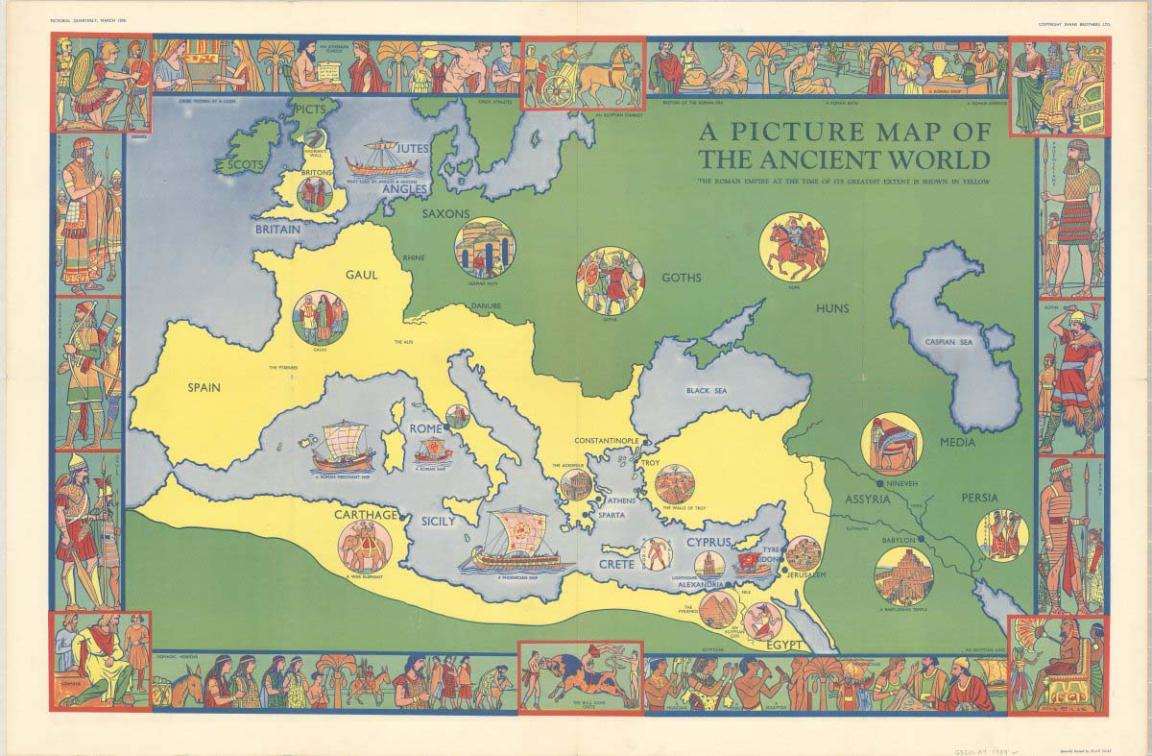
Ellis Luciano Silas and Evans Brothers Ltd, A picture map of the ancient world / specially painted by Ellis Silas, 1939, nla.gov.au/nla.obj-2378561352
Ellis Luciano Silas and Evans Brothers Ltd, A picture map of the ancient world / specially painted by Ellis Silas, 1939, nla.gov.au/nla.obj-2378561352
East and West
As the empire expanded, it became harder to govern. The decline of Roman control was not caused by a single event, but by many factors over time.
To restore order, Emperor Diocletian divided the empire in 286 CE. He appointed two senior and two junior emperors—one pair for the east and one for the west. The aim was to manage the vast territory more effectively.ould more easily address the issues facing the Empire.
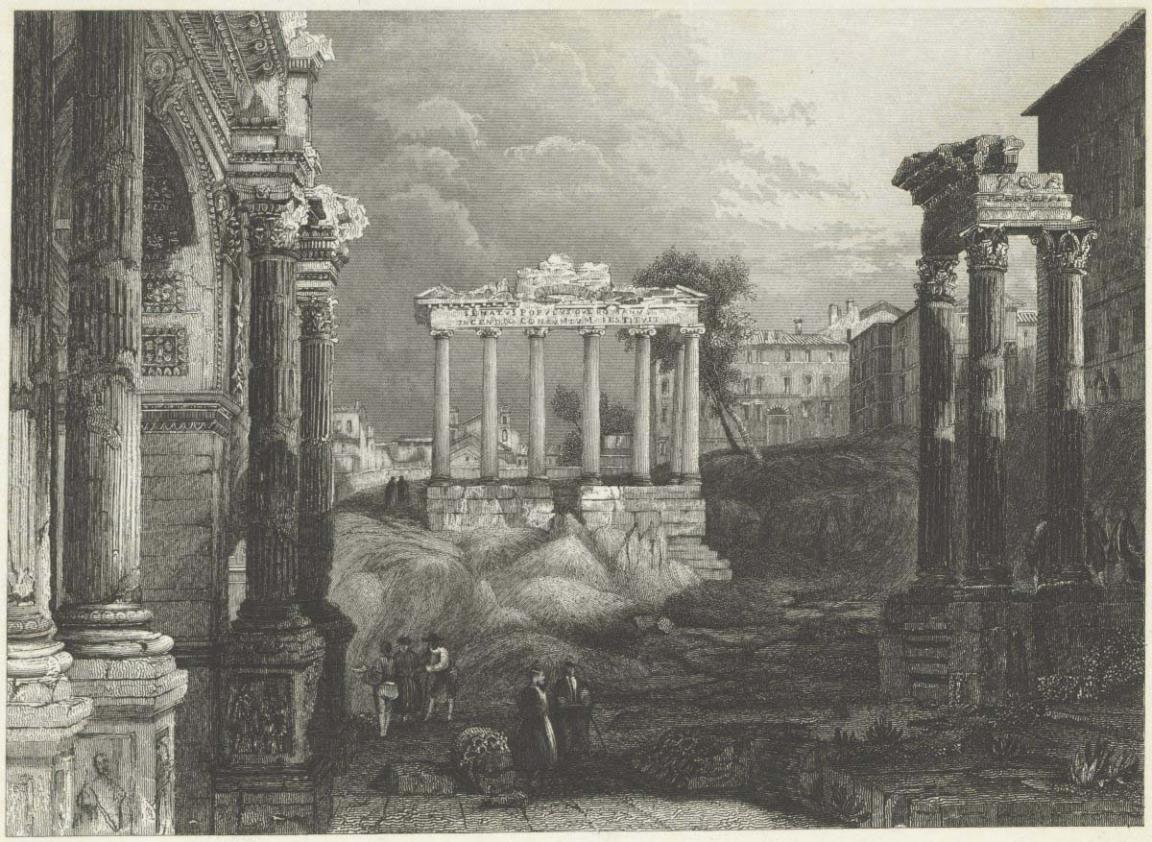
The Roman Forum, looking towards the ruins of the temple of Saturn, Rome, Italy, 1856, nla.gov.au/nla.obj-151254857
The Roman Forum, looking towards the ruins of the temple of Saturn, Rome, Italy, 1856, nla.gov.au/nla.obj-151254857
Some of the reasons scholars credit with eroding the stability of Rome:
- Increased resistance from border societies.
- Large numbers of refugees fleeing unrest and conflict, placing pressure on cities and infrastructure.
- Outbreaks of disease, spread by returning soldiers and worsened by crowded urban areas.
- Political divisions and poor leadership weakened government systems and public trust.
- A series of ineffective and unpopular emperors damaged the empire’s stability. Some made decisions that cost Rome land, money and lives.
Religious tension
One major challenge to Roman rule was the increased religious tensions within the diverse populations of the Empire.
Christianity, though small at first, spread steadily. Tensions grew between Christians and those who opposed them. Rome had long tolerated many religions, but some emperors saw Christianity as a threat to their authority.
Laws were introduced to punish Christians. These included fines, whippings and the damnatio ad bestias (condemnation to the beasts), where people were executed by wild animals in public arenas like the Colosseum.
Despite these harsh measures, Christianity continued to grow.
Beliefs and power
The Romans believed in many gods, spirits and divine forces. This is called polytheism (poly = many, theos = god). Emperors were also worshipped as living gods.
Christianity, by contrast, is monotheistic (mono = one). Christians believe in one God and that Jesus of Nazareth is his son. They believe that God’s authority is higher than any emperor or king.
This belief challenged the emperor’s power and was one reason Christians were persecuted.
A sign from God
Persecution of Christians continued under several emperors. However, the situation changed during the reign of Emperor Constantine.
Between 306 and 324 CE, the Roman Empire was divided by civil war. This period, known as the Civil Wars of the Tetrarchy, saw Constantine fighting rival emperors who refused to recognise each other’s authority.
Before a key battle against Emperor Maxentius in 312 CE, Constantine reportedly had a dream. In it, the Christian God instructed him to mark his soldiers’ shields with the initials of Jesus Christ. Constantine followed the vision, and his army entered battle bearing the Christian symbol. Despite being outnumbered, he won the battle and believed his victory was a sign of divine favour.
After the battle, Constantine converted to Christianity. However, he continued to tolerate Rome’s traditional religions.
Together with co-emperor Licinius, Constantine issued the Edict of Milan. This decree granted religious freedom to all people in the empire, provided they remained loyal to the emperor.
Licinius later resumed persecution of Christians. Eventually, Constantine defeated him in battle and became the sole ruler of the Roman Empire. Around 330 CE, he moved the capital to Byzantium, which was renamed Constantinople (Constantinopolis in Latin, meaning “City of Constantine”). The city kept this name until the early 20th century.
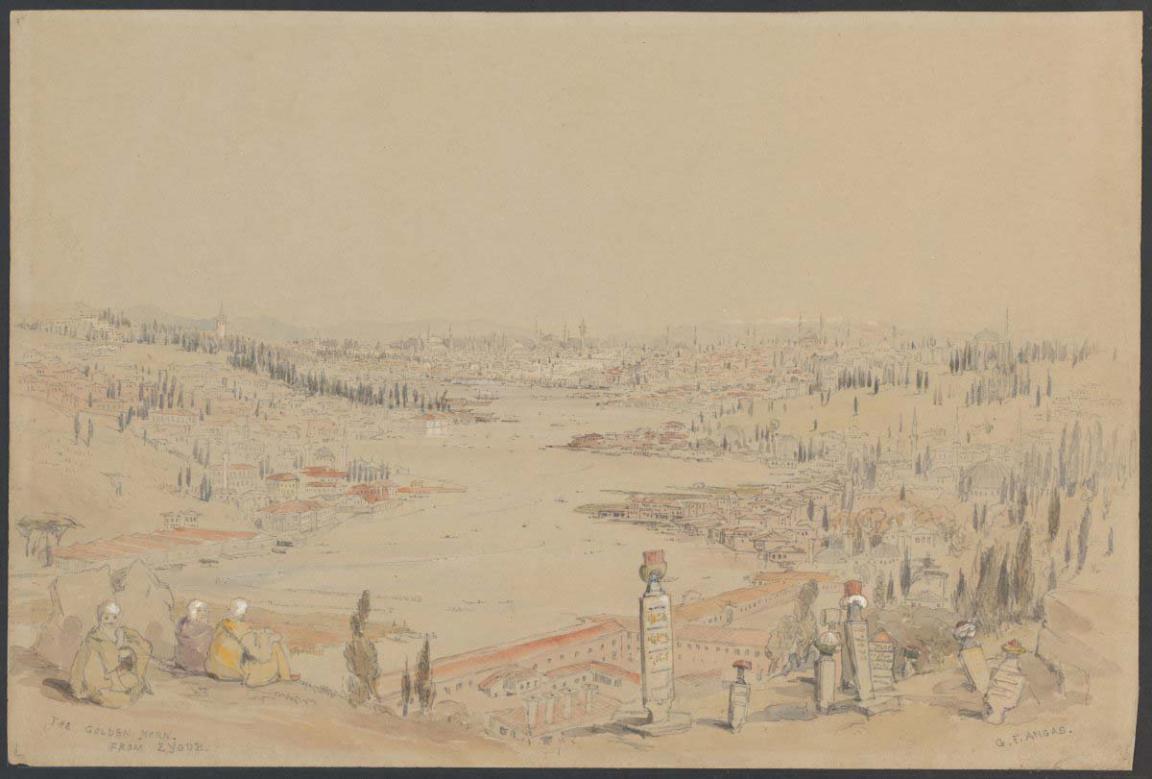
George French Angas, The Golden Horn from Eyoub, Constantinople, 1848, nla.gov.au/nla.obj-133001219
George French Angas, The Golden Horn from Eyoub, Constantinople, 1848, nla.gov.au/nla.obj-133001219
Under Constantine, Christians were free to practise their faith. He continued to use Christian symbols on coins and declared Sunday a day of rest.
Although Constantine accepted other religions, his successors—who were also Christian—began to dismantle traditional Roman religious practices. Some removed statues of Roman gods from public spaces.
By the end of the 4th century CE, Emperor Theodosius I passed laws that restricted non-Christian religions. He declared pagan holidays to be regular workdays, although some celebrations continued.
With government support, Christian groups began removing symbols of Rome’s old religion. They destroyed statues and temples, defaced mosaics, and painted crosses over sacred sites.
Fall of the Roman Empire
By the late 4th century CE, the Western Roman Empire was in decline. Relations with neighbouring kingdoms and tribes were deteriorating. The empire’s borders were under constant attack, especially from the Goths and Vandals.
Religious conflict continued to disrupt society. Trade and taxation systems were also affected.
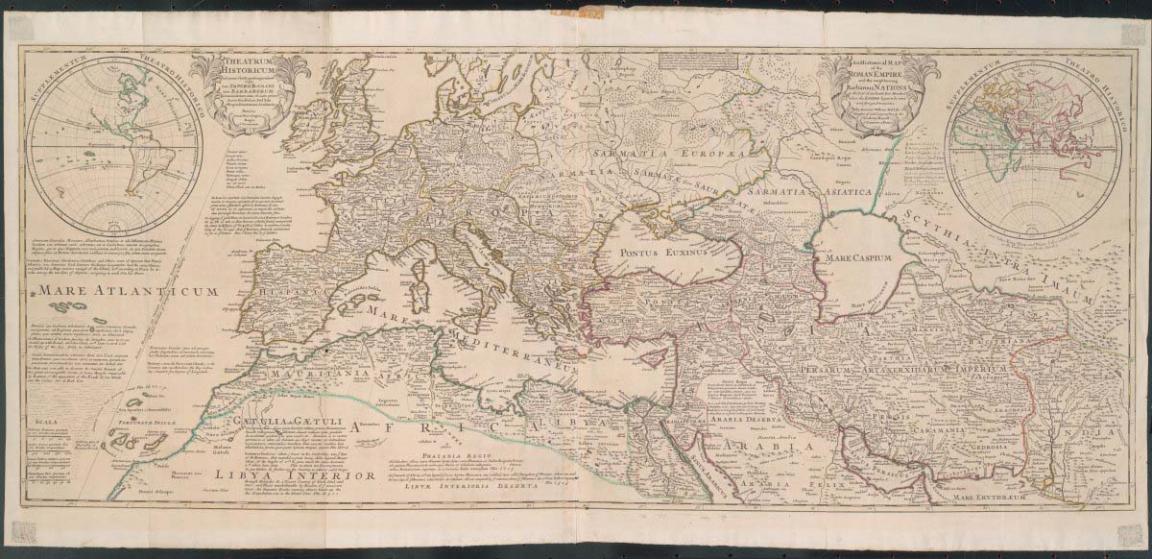
Guillaume de L'Isle, H. Moll, John Bowles, John King, Phillip Overton and Thomas Bowles (Booksellers), An historical map of the Roman Empire and the neighbouring Barbarous nations [cartographic material] : to the year of our Lord four hundred when the Empire began to be rent with foreign invasions / by Monsieur William Del Isle, member of and Geographer to the Academy Royall of Sciences at Paris. = Theatrum Historicum... tum Imperii Romani tum Barbarorum... Autore Guillelmo Del'Isle, 1709, nla.gov.au/nla.obj-230683586
Guillaume de L'Isle, H. Moll, John Bowles, John King, Phillip Overton and Thomas Bowles (Booksellers), An historical map of the Roman Empire and the neighbouring Barbarous nations [cartographic material] : to the year of our Lord four hundred when the Empire began to be rent with foreign invasions / by Monsieur William Del Isle, member of and Geographer to the Academy Royall of Sciences at Paris. = Theatrum Historicum... tum Imperii Romani tum Barbarorum... Autore Guillelmo Del'Isle, 1709, nla.gov.au/nla.obj-230683586
In 410 CE, the Visigoths attacked Rome. Although the capital had moved to Ravenna in 408 CE, Rome remained a cultural and religious centre. The Visigoths looted the city—Rome’s first sacking in 800 years. Over the next decades, it was attacked several more times by Goths and Vandals.
In 476 CE, the Germanic leader Odoacer (also spelled Odovacar) laid siege to Rome. He overthrew the last Western Roman Emperor, Romulus Augustus, and declared himself King of Italy.
Historians mark 476 CE as the fall of the Western Roman Empire. This event is also considered the end of the ancient era and the beginning of the medieval period. The Eastern Roman Empire, however, continued for nearly 1,000 more years, until it fell in 1453 CE.
Learning activities
Activity 1: Map the Roman Empire
At its peak, the Roman Empire covered more than 5 million square kilometres. Use maps to investigate its reach and influence.
- Compare a modern political map with a historical map of the Roman Empire.
- Trace the territory the Romans controlled on both maps.
- Identify modern-day countries that were once part of the empire.
- Label major Roman cities and compare them with today’s major cities.
Activity 2: Explore Roman innovations
The Romans developed advanced technology to manage their vast empire—much of it still influences us today.
- Research key Roman inventions, such as:
- aqueducts
- public sanitation
- roads
- public health systems
- Discuss why these inventions were important to the empire’s success.
- Investigate how we know about these inventions—look at sources such as ruins, texts or artworks.
- Identify which Roman technologies are still used in modern forms.
Activity 3: Imagine a world without adults
When powerful systems break down, big changes follow. Use your imagination to explore what might happen if society suddenly lost all its leaders.
- Write a creative story where all adults in the world suddenly disappear.
- Describe what life would be like:
- after one day
- after one week
- after one month
- after one year
- Think about how schools, towns and countries would change.
- Consider the challenges and dangers children might face.
